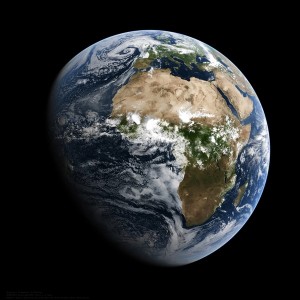Science is about asking questions, as much as it is about finding answers. Most of the time spent by scientists doing research is used to constrain and clarify what exactly is unknown – what does not yet form part of the consensus among the scientific community. Researchers all over the globe are working tirelessly to answer the unresolved questions about the inner workings of our planet, but inevitably new answers only lead to new questions. What are the main questions that will keep Earth scientists busy for many years to come?
Daniel Garcia-Castellanos (working at the Spanish National Research Council [CSIC] in Barcelona), through online collaboration with other colleagues, has put together a list of the top 49 questions which provide a fully referenced account of the main current scientific questions, disputes and challenges in the geosciences, with special emphasis on the solid Earth. Nevertheless, 49 is a big number, so we’ve split the questions into more manageable sections. What follows is a series of five posts over the next few weeks, detailing key research questions in specific areas.
This series should be your one-stop shop and quick-reference guide of the current hot topics in geosciences. If you are a budding investigator, let it serve as inspiration for the direction you want your research to take and, if you are an established scientist, let it reignite your passion for the subject. For everyone else, marvel at everything we’ve yet to learn. If you think there are other questions that should be added to the list, we’d love to hear from you! Make sure you add your suggestions in the comments section.
We start the series with the fundamental question: How did it all begin?
The Early Earth and the Solar System
New, exciting hypotheses about the early stages of our planet have been driven by advances in our understating of the geochemistry of meteorites, amongst other findings. As per usual, the answers are outnumbered by our numerous knowledge gaps:
1. How did the Earth and other planets form? Were planets formed in situ or in orbits different from their present ones? What determined the different deep layering of the solar planets? (McKinnon, 2012, Science – on Mercury)
2. How did the Moon form? Was there ever a collision of the Earth with another planet (Theia), which might have given birth to our satellite? (Canup, 2013, Science) There is compelling evidence, such as measures of a shorter duration of the Earth’s rotation and lunar month in the past, pointing to a Moon much closer to Earth during the early stages of the Solar System. (Williams, 1991, CSPG Spec. Pubs.)
3. How hot is the inside of the planet and how did this temperature evolve? How did Earth’s internal temperature decay since it formed by accretion of stony meteorites known as chondrites? How abundant are radiogenic elements in the Earth’s interior and to what extent are they a source of internal heat? Did a “faint young sun” ever warm a “snowball Earth”? (Wired; Marty et al., 2013, Science)
4. Why do plate tectonics occur only on Earth? (Martin et al., 2008, Phys. Edu.) How did the planet cool down before the mantle convection lead to plate tectonics? Was the Earth’s crust formed during the early stages of its evolution or is it the result of a gradual distillation of the mantle that continues today along with crustal recycling? Is the crust still growing or does its recycling compensate for crust formation at mid-ocean ridges and other volcanic areas?
5. How inherent to planetary evolution is the development of life conditions? Earth-like planets are now known to be abundant in our galaxy (two out of three stars may have one [for example, Cassan et al., 2012, Nature]), but how many of them develop widespread durable water chemistry? (Zimmer, 2005, Science, Elkins-Tanton, 2013, Nature) How much of our water is supplied by comets or asteroids; when and how did it reach the Earth? [Greene, 2013, Smithsonian Mag.]
Whilst this is likely not an exhaustive list of the questions we have about how our planet came to be and its early development, it no doubt highlights the frontiers of our current understanding.
Next time we explore the Earth’s deep interior. Direct study of samples can only be achieved for the top 12km of the Earth’s crust, so what lies beneath?
By Laura Roberts Artal, EGU Communications Officer, based on the article previously posted on RetosTerricolas by Daniel Garcia Castellanos, researcher at ICTJA–CSIC, Barcelona





Pingback: The known unknowns – the outstanding 49 questions in Earth sciences (Part III) | GeoLog
Pingback: The known unknowns – the outstanding 49 questions in Earth Sciences (Part II) | GeoLog